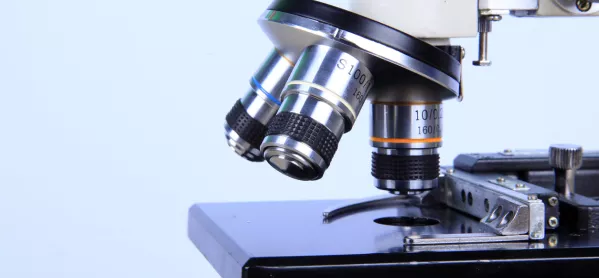One of my all-time favourite gifts when I was growing up was a microscope. I can still remember the fun I had, scooping weird bits of gunk out of the garden pond and examining them under the lens. It was a most treasured possession, at least until the time I took it apart to see how it worked and then couldn’t figure out how to reassemble it.
I still believe that the ability to see how much wonder there is, in even a drop of pond water, can ignite a child’s sense of curiosity and get them asking questions - something that surely every teacher would want to encourage.
Times have changed since I was in primary school. While I think there are “proper” microscopes lurking somewhere in the back of the science resource cupboard, digital microscopes are what have recently been getting my class talking - and asking questions.
Scope to explore
Digital microscopes can be found relatively cheaply and used by all age groups - something that is important in these times of tightening budgets. A class set of 10 would allow children to work in small groups, but even if your budget could only stretch to one, hooking it up via USB to a laptop and projector would allow all children to see the images at the same time - something that is just not possible with traditional light microscopes.
Although the cheaper models don’t magnify a huge amount, most will magnify to between 50 and 100 times, which will be enough to get children talking. The ability to capture the images as photographs can be useful too.
Within the primary curriculum there are many opportunities to use digital microscopes: examining the structure of flowers and plants, investigating different materials and taking a closer look at mini-beasts, to name just a few.
There is also a huge amount of scope for lessons to develop in new and interesting ways when you are using microscopes. In a recent science lesson, my class were looking at different types of sugar and artificial sweeteners, noting the granule size and discussing the effect they thought this would have on how easily the granules dissolved.
Inevitable excitement
Subsequently, when we were evaporating water from a solution in order to recover the sugar, one girl wondered if the sugar would look the same as it had before it had been dissolved. This led to a slight detour in the lesson as we looked at the sugar (and captured photos of the crystals) before and after being in solution. It allowed the children to observe that the crystals were much smaller after evaporation had taken place - something that I had not originally planned for.
However, if you decide to invest in a set of digital microscopes, you should be prepared to allow an extra 10 minutes or so at the start of your lesson to deal with the inevitable excitement that comes with the power to zoom in on the world around us.
There will be many questions and requests to look at things that are entirely unrelated to content of the lesson. Even during the sugar lesson, some time was spent examining the palms of hands, jumper fabric and (horror of horrors) a close-up view of the inside of one boy’s ear.
But taking an interest in the world is an amazing thing, and one that should be encouraged in every science lesson. Remember: as long as pupils are asking questions, they’re learning.
Josephine Hopkins is key stage 2 leader at Slade Primary School in Tonbridge
Want to keep up with the latest education news and opinion? Follow Tes on Twitter and like Tes on Facebook.


